Download A.O. Smith BTX-80 Operation Manual
Transcript
MODEL BTX-80 COMMERCIAL GAS WATER HEATER Glass-Lined Tank-Type Water Heater Thank you for buying this energy efficient water heater. We appreciate your confidence in our products. You should thoroughly read this manual before installation and/ or operation of this water heater. Please pay particular attention to the important safety and operating instructions as well as the WARNING and CAUTIONS. TABLE OF CONTENTS PAGE GET TO KNOW YOUR WATER HEATER 2-3 GENERAL SAFETY INFORMATION 4-5 INSTALLATION 5-16 OPERATION 16-18 MAINTENANCE AND TROUBLESHOOTING 18-21 TROUBLESHOOTING WITH THE LED 22 LIMITED WARRANTY 23 CAUTION TEXT PRINTED OR OUTLINED IN RED CONTAINS INFORMATION RELATIVE TO YOUR SAFETY. PLEASE READ THOROUGHLY BEFORE INSTALLING AND USING THIS APPLIANCE. A DIVISION OF A.O. SMITH CORPORATION McBEE, SOUTH CAROLINA, U.S.A. www.aosmithwaterheaters.com KEEP THIS MANUAL IN THE POCKET ON THE HEATER FOR FUTURE REFERENCE WHENEVER MAINTENANCE ADJUSTMENT OR SERVICE IS REQUIRED. PRINTED IN THE U.S.A. 0406 PART NO. 197086-000 1 ROUGH-IN-DIMENSIONS Rough-In-Dimensions Model Units Inches cm BTX-80 A 70.62 179.37 B 68.20 173.23 C 51.90 131.83 D 20.90 53.09 E 9.15 23.24 F 12.00 30.48 G 22.00 55.88 H 8.00 20.32 J 15.81 40.16 K 26.92 68.38 Top/Side Inlet and Outlet: 3/4" NPT Gas Inlet: 1/2" NPT Capacity and Gas and Electrical Characteristics Approximate Capacity U.S. Gals. Liters 50 189 Model BTX-80 Gas Type Nat. Manifold Pressure “WC 4.00 Electrical Characteristics Volts/Hz Amperes 120/60 <5 kPA 0.99 All models - Maximum Supply Pressure: 14 inches W.C. (3.48kPa) Minimum Supply Pressure Natural Gas: 5.0 inches W.C. (1.24kPa) Minimum Pressure must be maintained under both load and no load (static and dynamic) conditions. Recovery Capacities - U.S. Gallons/Hr. and Liters/Hr. at Temperature Rise Indicated M od el B T X-80 Inp ut R ating R a tin g (B tu/hr) (kW ) 76 ,0 00 2 2.25 Te m p. F° R ise C° GPH LPH 30 17 2 75 10 41 40 22 20 6 78 0 R ec ov er y C ap ac ities 60 70 80 90 33 39 44 50 1 38 1 18 10 4 92 5 22 4 47 39 4 34 8 50 28 1 65 6 25 Recovery capacity based on 90% thermal efficiency. 2 10 0 56 83 31 4 1 10 61 75 2 84 12 0 67 69 26 1 1 30 72 64 2 42 1 40 78 59 2 23 TYPICAL INSTALLATION (A) (B) (C) (D) (F) (G) REPLACEMENT PARTS AND DELIMING PRODUCTS Replacement parts and recommended delimer may be ordered through authorized servicers or distributors. When ordering parts, provide complete model and serial numbers (see rating plate), quantity and name of part desired. (See Replacement Parts Insert for list of part numbers and descriptions.) Standard hardware items may be purchased locally. (H) (J) (K) (L) (M) (N) (O) (P) (Q) (R) (S) (T) (U) VENT PIPE ANODE HOT WATER OUTLET OUTLET (120 VAC) GAS SUPPLY MAIN MANUAL GAS SHUT OFF VALVE GROUND JOINT UNION DIRT LEG OUTER DOOR UNION INLET WATER SHUT OFF VALVE COLD WATER INLET INLET DIP TUBE TEMPERATURE AND PRESSURE RELIEF VALVE RATING PLATE INSULATION VENT TERMINAL DRAIN VALVE IGNITER AND MAIN BURNER (W) (X) (Y) (AA) (CC) DRAIN PAN CONTROL CONTROL HARNESS* MOTOR & BLOWER CONDENSATE FITTING (4 Places as Shown)** (DD) PLASTIC TOP (EE) ON/OFF SWITCH (FF) EXHAUST TEE (GG) ELBOW (HH) BUSHING (II) NIPPLE (JJ) CONDENSATE TEE (KK) HOSE BARB (LL) PLUG (MM) VENT PIPE ASSEMBLY #1 (NN) VENT PIPE ASSEMBLY #2 (OO) VENT PIPE ASSEMBLY #3 (PP) SIDE RECIRCULATION LOOP INLET*** (QQ) SIDE RECIRCULATION LOOP OUTLET*** (not shown) (RR) VENT ATTENUATION ASSEMBLY (VAA) (Optional) CONDENSATE ASSEMBLY (U) NATURAL GAS MAIN BURNER WITH IGNITER ASSEMBLY SIDE VIEW VACUUM RELIEF VALVE (X) TEMPERATURE INDICATORS *INSTALL PER LOCAL CODES * CAUTION HARNESS HAS 120 VAC. IN OPERATION. ** See "PLANNING THE VENT SYSTEM", "CONDENSATE" and "PREPARATION OF BLOWER ASSEMBLY" in the "INSTALLATION" section for more information. *** The side recirculation loop connections may not be used as the primary water inlet and outlet connections. For your convenience, plugs are installed in these fittings at the factory. Remove these plugs if needed for your specific installation. Otherwise (as with all connections) check for leaks while filling the tank with water and after completing the installation. TEMPERATURE ADJUSTMENT BUTTONS FIGURE 1 3 LP gas must be used with great caution. It is highly explosive and heavier than air. It collects first in the low areas making its odor difficult to detect at nose level. If LP gas is present or even suspected, do not attempt to find the cause yourself. Go to a neighbor's house, leaving your doors open to ventilate the house, then call your gas supplier or service agent. Keep area clear until a service call has been made. GENERAL SAFETY INFORMATION EXTERNAL DAMAGE Do not operate the water heater until it has been fully checked out by a qualified technician, if the water heater: • Has been exposed to fire or damage. • Displays evidence of sooting. • Produces steam or unusually hot water. At times you may not be able to smell an LP gas leak. One cause is odor fade, which is a loss of the chemical odorant that gives LP gas its distinctive smell. Another cause can be your physical condition, such as having a cold or a diminishing sense of smell with age. For these reasons, the use of a propane gas detector is recommended. If the water heater has been subject to flooding it must be replaced. CHEMICAL VAPOR CORROSION IF YOU EXPERIENCE AN OUT-OF-GAS SITUATION, DO NOT TRY TO RELIGHT APPLIANCES YOURSELF. Ask your LP delivery person to relight pilots for you. Only trained LP professionals should conduct the required safety checks in accordance with industry standards. WARNING CORROSION OF THE FLUEWAYS AND VENT SYSTEM MAY OCCUR IF AIR FOR COMBUSTION CONTAINS CERTAIN CHEMICAL VAPORS. SUCH CORROSION MAY RESULT IN FAILURE AND RISK OF ASPHYXIATION. EXTENDED NON-USE PERIODS Spray can propellants, cleaning solvents, refrigerator and air conditioning refrigerants, swimming pool chemicals, calcium and sodium chloride (water softener salt), waxes, and process chemicals are typical compounds which are potentially corrosive. WARNING HYDROGEN GAS CAN BE PRODUCED IN A HOT WATER SYSTEM SERVED BY THIS HEATER THAT HAS NOT BEEN USED FOR A LONG PERIOD OF TIME (GENERALLY TWO WEEKS OR MORE). HYDROGEN GAS IS EXTREMELY FLAMMABLE. To reduce the risk of injury under these conditions, it is recommended that the hot water faucet be opened for several minutes at the kitchen sink before using any electrical appliance connected to the hot water system. If hydrogen is present, there will probably be an unusual sound such as air escaping through the pipe as the water begins to flow. THERE SHOULD BE NO SMOKING OR OPEN FLAME NEAR THE FAUCET AT THE TIME IT IS OPEN. Do not store products of this sort near the heater. Also, air which is brought in contact with the heater should not contain any of these chemicals. If necessary, uncontaminated air should be obtained from remote or outside sources. The limited warranty is voided when failure of water heater is due to a corrosive atmosphere. (See limited warranty for complete terms and conditions). IMPROPER COMBUSTION INSULATION BLANKETS WARNING ATTIC AND/OR EXHAUST FANS OPERATING ON THE PREMISES WITH A WATER HEATER CAN RESULT IN CARBON MONOXIDE POISONING AND DEATH. Insulation blankets available to the general public for external use on gas water heaters are not necessary with this water heater. The purpose of an insulation blanket is to reduce the standby heat loss encountered with storage tank heaters. Your water heater meets and exceeds the Energy Policy Act standards with respect to insulation and standby loss requirements, making an insulation blanket unnecessary. OPERATION OF THESE FANS CAN PRODUCE A NEGATIVE DRAFT IN THE AREA OF THE WATER HEATER PREVENTING THE PRODUCTS OF COMBUSTION FROM EXHAUSTING THROUGH THE VENT PIPE. The venting of the water heater should be inspected by a qualified service technician at the time of installation and periodically thereafter to ensure a down-draft condition does not exist. WARNING Should you choose to apply an insulation blanket to this heater, you should follow these instructions (See Figure 1 for identification of components mentioned below). Failure to follow these instructions can restrict the air flow required for proper combustion, potentially resulting in fire, asphyxiation, serious personal injury or death. DO NOT OBSTRUCT THE FLOW OF COMBUSTION AND VENTILATING AIR. ADEQUATE AIR FOR COMBUSTION AND VENTILATION MUST BE PROVIDED FOR SAFE OPERATION. LIQUID PETROLEUM MODELS • Do not cover the gas valve or temperature & pressure relief valve. WARNING Water heaters for propane or liquefied petroleum gas (LPG) are different from natural gas models. A natural gas heater will not function safely on LP gas and no attempt should be made to convert a heater from natural gas to LP gas. • Do not allow insulation to come within 2" of the blower. • Do not allow insulation to come within 2" of the floor to prevent blockage of combustion air flow to the burner. 4 • Do not cover the instruction manual. Keep it on the side of the water heater or nearby for future reference. heater differ from standard clearances, install water heater according to clearances stated on heater. • Do obtain new warning and instruction labels for placement on the blanket directly over the existing labels. A minimum clearance of 4" must be allowed for access to replaceable parts such as the thermostats, drain valve and relief valve. A top clearance of 24" should be allowed for blower assembly service. • Do inspect the insulation blanket frequently to make certain it does not sag, thereby obstructing combustion air flow. Adequate clearance for servicing this appliance should be considered before installation, such as changing the anodes, etc. Minimum clearances for proper operation are given above. INSTALLATION REQUIRED ABILITY WARNING In cold climates provide protection against freeze-up. INSTALLATION OR SERVICE OF THIS WATER HEATER REQUIRES ABILITY EQUIVALENT TO THAT OF A LICENSED TRADESMAN IN THE FIELD INVOLVED. PLUMBING, ELECTRICAL AIR SUPPLY, VENTING AND GAS SUPPLY ARE REQUIRED. Installation of the water heater must be accomplished in such a manner that if the tank or any connections should leak, the flow will not cause damage to the structure. For this reason, it is not advisable to install the water heater in an attic or upper floor. When such locations cannot be avoided, a suitable drain pan should be installed under the water heater. Drain pans are available at your local hardware store. Such a drain pan must have a minimum length and width of at least 2 inches (51 mm) greater that the water heater dimensions and must be piped to an adequate drain. The pan must not restrict combustion air flow. GENERAL The heater is designed to operate on natural or propane gases. HOWEVER, MAKE SURE the gas on which the heater will operate is the same as that specified on the heater model and rating plate. The installation must conform to these instructions and the local code authority having jurisdiction. In the absence of local codes, the installation must conform to the current edition of National Fuel Gas Code ANSI Z223.1/NFPA 54 and the National Electrical Code, NFPA 70. The former is available from the Canadian Standards Association, 8501 East Pleasant Valley Road, Cleveland, OH 44131, and both documents are available from the National Fire Protection Association, 1 Batterymarch Park, Quincy, MA 02269. GROUNDING Water heater life depends upon water quality, water pressure and the environment in which the water heater is installed. Water heaters are sometimes installed in locations where leakage may result in property damage, even with the use of a drain pan piped to a drain. However, unanticipated damage can be reduced or prevented by a leak detector or water shut-off device used in conjunction with a piped drain pan. These devices are available from some plumbing supply wholesalers and retailers, and detect and react to leakage in various ways: The water heater, when installed, must be grounded in accordance with local codes, or in the absence of local codes: • Sensors mounted in the drain pan that trigger an alarm or turn off the incoming water to the water heater when leakage is detected. The National Electrical Code, NFPA 70 • Sensors mounted in the drain pan that turn off the water supply to the entire home when water is detected in the drain pan. HIGH ALTITUDE INSTALLATION • Water supply shut-off devices that activate based on the water pressure differential between the cold water and hot water pipes connected to the water heater. CAUTION INSTALLATIONS ABOVE 2000 FT. REQUIRE REPLACEMENT OF THE BURNER ORIFICE IN ACCORDANCE WITH THE NATIONAL FUEL GAS CODE (ANSI Z223.1/NFPA 54). FAILURE TO REPLACE THE ORIFICE COULD RESULT IN IMPROPER AND INEFFICIENT OPERATION OF THE APPLIANCE, PRODUCING CARBON MONOXIDE GAS IN EXCESS OF SAFE LIMITS, WHICH COULD RESULT IN SERIOUS PERSONAL INJURY OR DEATH. CONTACT YOUR GAS SUPPLIER FOR ANY SPECIFIC CHANGES WHICH MAY BE REQUIRED IN YOUR AREA. • Devices that will turn off the gas supply to a gas water heater while at the same time shutting off its water supply. WARNING DO NOT INSTALL THIS WATER HEATER DIRECTLY ON A CARPETED FLOOR. A FIRE HAZARD MAY RESULT. Instead the water heater must be placed on a metal or wood panel extending beyond the full width and depth by at least 3 inches (76.2 mm) in any direction. If the heater is installed in a carpeted alcove or closet, the entire floor shall be covered by the panel. SOME MODELS ARE SPECIFICALLY BUILT FOR HIGH ALTITUDE SERVICE. AIR REQUIREMENTS PLEASE CHECK THE RATING PLATE BEFORE MAKING CHANGES. In calculating the free area of a vent opening, the blocking effect of screens, louvers and grills should be considered. Screens shall not be of a mesh smaller than 1/4 inch square. If the free area is not known, the current edition of National Fuel Gas Code ANSI Z223.1 recommends using figures of 20-25 percent free area for wood louvers or 60-75 percent for metal grills or louvers. LOCATION OF HEATER When installing the heater, consideration must be given to proper location. Location selected should be as close to the wall as practicable with adequate air supply and as centralized with the water piping system as possible. UNCONFINED SPACE The heater is designed for installation on combustible flooring in a closet having minimum clearances from combustible material of: 0" clearance from sides and rear, 5.5" from the front and 12" from the top. (Standard clearance.) If clearances stated on the In buildings of conventional frame, brick or stone construction, unconfined spaces may provide adequate air for combustion and ventilation air for the power venter. 5 3. This unit may NEVER be connected to any existing heating system or component(s) previously used with a non-potable water heating appliance. If the unconfined space is within a building of tight construction (building using the following construction: weather stripping, heavy insulation, caulking, vapor barrier, etc.), air for combustion and ventilation must be obtained from outdoors. The installation instructions for confined spaces must be followed. 4. When the system requires water for space heating at temperatures higher than required for domestic water purposes, a tempering valve must be installed. Please refer to Fig. 2 for suggested piping arrangement. CONFINED SPACE When drawing combustion air from inside a conventionally constructed building to a confined space, such a space shall be provided with two permanent openings. ONE WITHIN 12 INCHES OF THE ENCLOSURE TOP AND ONE WITHIN 12 INCHES OF THE ENCLOSURE BOTTOM. Each opening shall have a free area of one square inch per 1000 Btu/hr of the total input of all appliances in the enclosure, but not less than 100 square inches. If the confined space is within a building of tight construction, air for combustion and ventilation must be obtained from outdoors. When directly communicating with the outdoors or communicating through vertical ducts, two permanent openings, located in the above manner, shall be provided. Each opening shall have a free area of not less than one square inch per 4000 Btu/hr of the total input of all appliances in the enclosure. If horizontal ducts are used, each opening shall have a free area of not less than one square inch per 2000 Btu/hr of the total input of all appliances in the enclosure. FIGURE 2 CLOSED WATER SYSTEM A closed system will exist if a back-flow preventer (check valve), pressure reducing valve, or other similar device is installed in the cold water line between the water heater and the street main (or well). Excessive pressure may develop due to the thermal expansion of heated water causing premature tank failure or intermittent relief valve operation. This type of failure is not covered by the limited warranty. An expansion tank may be necessary in the cold water supply to alleviate this situation, see Fig. 1. Contact the local plumbing authority. If the temperature and pressure relief valve on the appliance discharges periodically, this may be due to thermal expansion in a closed water supply system. Contact the water supplier or local plumbing inspector on how to correct situation. DO NOT PLUG THE TEMPERATURE AND PRESSURE RELIEF VALVE. GAS CONNECTIONS The minimum gas supply pressure for input adjustment is 5.0" W.C. for natural gas. THE HEATER IS NOT INTENDED FOR OPERATION AT HIGHER THAN 14" WATER COLUMN SUPPLY PRESSURE. EXPOSURE TO HIGHER GAS SUPPLY PRESSURE MAY CAUSE DAMAGE TO THE CONTROL WHICH COULD RESULT IN FIRE OR EXPLOSION. If overpressure has occurred such as through improper testing of gas lines or emergency malfunction of the supply system, the control must be checked for safe operation. Make sure that the outside vents on the supply regulators and the safety vent valves are protected against blockage. These are parts of the gas supply system not the heater. Vent blockage may occur during ice storms. WATER CONNECTIONS Refer to figure 1 for typical installation. A suitable pipe thread sealant must be used to prevent leakage. Please note that the side connection plugs are not factory installed. Plugs are supplied in a kit with the water heater. IT IS IMPORTANT TO GUARD AGAINST CONTROL FOULING FROM CONTAMINANTS IN THE GAS WAYS. SUCH FOULING MAY CAUSE IMPROPER OPERATION, FIRE OR EXPLOSION. WATER (POTABLE) HEATING AND SPACE HEATING 1. All piping components connected to this unit for space heating applications shall be suitable for use with potable water. All gas piping must comply with local codes and ordinances or with the National Fuel Gas Code (ANSI Z223.1 / NFPA-54) whichever applies. 2. Toxic chemicals, such as those used for boiler treatment, shall NEVER be introduced into this system. 6 WARNING VENT HOOD(S) MAY BE EXTREMELY HOT DURING OPERATION. FIGURE 3 flange screws, joints and pipe connections. Replace part if leak can't be stopped. REFER TO FIG. 1 FOR CONNECTION DETAILS. BEFORE ATTACHING THE GAS LINE BE SURE THAT ALL GAS PIPE IS CLEAN ON THE INSIDE. DISCONNECT THE APPLIANCE AND ITS INDIVIDUAL SHUT OFF VALVE FROM THE GAS SUPPLY PIPING SYSTEM DURING ANY SUPPLY PRESSURE TESTING EXCEEDING 1/2 PSI (3.5 kPa). GAS SUPPLY LINE MUST BE CAPPED WHEN DISCONNECTED FROM THE HEATER. FOR TEST PRESSURES AT 1/2 PSI (3.5 kPa) OR LESS, THE APPLIANCE NEED NOT BE DISCONNECTED, BUT MUST BE ISOLATED FROM THE SUPPLY PRESSURE TEST BY CLOSING THE MAIN MANUAL GAS VALVE. TO TRAP ANY DIRT OR FOREIGN MATERIAL IN THE GAS SUPPLY LINE, A DIRT LEG (SOMETIMES CALLED DRIP LEG) MUST BE INCORPORATED IN THE PIPING, FIGURE 1. The dirt leg must be readily accessible. Install in accordance with recommendations of serving gas supplier. Refer to the current edition of ANSI Z223.1. To prevent damage, care must be taken not to apply too much torque when attaching gas supply pipe to thermostat gas inlet. The thermostat inlet has a pad for use with a backup wrench. Apply joint compounds (pipe dope) sparingly and only to the male threads of pipe joints. Do not apply compound to the first two threads. Use compounds resistant to the action of liquefied petroleum gases. Do not use teflon tape on thermostat fittings. BEFORE PLACING THE HEATER IN OPERATION, CHECK FOR GAS LEAKAGE. USE SOAP AND WATER SOLUTION OR OTHER MATERIAL ACCEPTABLE FOR THIS PURPOSE. DO NOT USE MATCHES CANDLES, FLAME OR OTHER SOURCES OF IGNITION TO LOCATE GAS LEAKS. CONNECTION OF GAS PIPE 1. When connecting gas pipe to unit, apply wrench to flange only. Note: Do not use wrench on gas valve or gas valve bracket. RELIEF VALVE A NEW TEMPERATURE AND PRESSURE RELIEF VALVE COMPLYING WITH THE STANDARD FOR RELIEF VALVES AND AUTOMATIC GAS SHUT OFF DEVICES FOR HOT WATER SUPPLY SYSTEMS, ANSI Z21.22 (CURRENT EDITION) MUST BE INSTALLED IN THE HEATER IN THE MARKED OPENING PROVIDED. THE VALVE MUST BE OF A SIZE (INPUT RATING) THAT WILL BE ADEQUATE FOR YOUR SIZE HEATER. 2. PERFORM THE GAS LEAK TEST ANY TIME WORK IS DONE ON A GAS SYSTEM TO AVOID THE POSSIBILITY OF FIRE OR EXPLOSION WITH PROPERTY DAMAGE, PERSONAL INJURY, OR LOSS OF LIFE. The Gas Leak Test is performed as follows: Paint pipe connections upstream of gas control with a rich soap and water solution to test for leaks before operating main burner. Bubbles indicate gas leak. To stop leak, tighten pipe connections. After piping connections are checked, turn on main burner. (See Lighting and Operating Instructions in this manual or on water heater.) With main burner in operation, paint pipe joints (including flanges), and control inlet and outlet with rich soap and water solution. Bubbles indicate gas leak. To stop leak, tighten Check the metal tag on the relief valve and compare it to the heater’s rating plate. The pressure rating of relief valve must not exceed the working pressure shown on the rating plate of the heater. In addition the hourly Btu rated temperature steam discharge capacity of the relief valve shall not be less than the input rating of the heater. NO VALVE IS TO BE PLACED BETWEEN THE RELIEF VALVE AND TANK. DO NOT PLUG THE RELIEF VALVE. 7 The drain line connected to this valve must not contain a reducing coupling or other restriction and must terminate near a suitable drain to prevent water damage during valve operation. The discharge line shall be installed in a manner to allow complete drainage of both the valve and line. DO NOT THREAD, PLUG OR CAP THE END OF THE DRAIN LINE. combustible materials must be provided in accordance with information in this manual under LOCATION OF HEATER and INSTALLATION OF VENT SYSTEM, and with the National Fuel Gas Code and local codes. VENT PIPE ASSEMBLY Plan the route of the vent system from the discharge of the blower to the planned location of the vent terminal. PLANNING THE VENT SYSTEM There are three parts of the vent pipe assembly that connect the water heater exhaust (located on the lower back side of the water heater) to the inlet of the blower assembly (mounted on top of the water heater) as shown in Figure 1. These parts will need to be assembled according to the instructions in the VENT PIPE PREPARATION section of this manual. These PVC parts should be assembled with ASTM D-2564 grade cement. 1. Layout the total vent system to use a minimum of vent pipe and elbows. 2. This water heater is capable of venting the flue gases the equivalent of twenty-five (25) feet of 2 inch pipe, sixty-five (65) feet of 3 inch pipe, or one-hundred twenty-eight (128) feet of 4 inch pipe as listed in Table 1. Assemble Vent Pipe Assemblies #1, #2 and #3 (See Figure 1) prior to cementing. The preferred orientation of Vent Pipe Assembly #1 (Condensate U-Assembly) is shown in Figure 4. However this assembly may be rotated to a different orientation as needed for the specific installation requirements. Note the rotational orientation of each part by marking a line several inches long across the joints. The long tube of Vent Pipe Assembly #2 should be approximately vertical. If it is found that either of the two pieces of pipe in Vent Pipe Assembly #2 are too long for proper fit-up, then remove as little material as possible to improve the fit-up. Keep in mind that the pipes will insert slightly further into the elbows when cement is applied as it acts as a lubricating agent. The vertical distance from the bottom of the Condensate U-Assembly to the floor that supports the water heater should be approximately 0.25" (See Figure 4). Disassemble the parts and cement back together using the alignment marks. After the cement dries, attach the assembly to the blower and the water heater exhaust using the supplied rubber boots and hose clamps. TABLE 1 Number of 90° Elbows 1 2 3 4 5 6 2" Maximum Pipe (Feet) 20 15 10 ---- 3" Maximum Pipe (Feet) 60 55 50 45 40 35 4" Maximum Pipe (Feet) 120 112 104 96 88 80 The minimum vent lengths for each of the pipe sizes is one 90° on top of the unit plus 2' of straight pipe and the appropriate termination. NOTE: The equivalent feet of pipe listed above are exclusive of the termination. That is, the termination, with an installed screen, is assumed to be in the system and the remainder of the system must not exceed the lengths discussed above. A condensate trap is incorporated in the bottom of this vent pipe assembly. See the CONDENSATE section of this manual for further details. 3. The blower discharge adapter is made to accept only straight sections of 2" pipe. To start, a minimum of 2 inches of 2" pipe must be attached to the blower discharge (See figure 5). VENTING If using 2" inch vent pipe: A minimum of 2 inches must be attached to the blower before the first elbow. After the first elbow add the additional venting required for the installation. The total system cannot exceed the lengths discussed above, where each elbow is equal to 5 feet of straight pipe. WARNING NEVER OPERATE THE HEATER UNLESS IT IS VENTED TO THE OUTDOORS AND HAS ADEQUATE AIR SUPPLY TO AVOID RISKS OF IMPROPER OPERATION, FIRE, EXPLOSION OR ASPHYXIATION. VENT PIPE TERMINATION If using 3" or 4" inch vent pipe: Two inches of pipe must be attached to the blower discharge before adding a reducer to acquire the desired pipe diameter. An appropriately sized 45 degree elbow (supplied locally – a schedule 40 DWV) vent terminal must be obtained with an equivalent screen (supplied in vent kit). The total system cannot exceed the equivalent pipe lengths discussed above where each elbow is equal to 5 feet of straight pipe (3" vent pipe) or 8 feet of straight pipe (4" vent pipe). The first step is to determine where the vent pipe will terminate. See Figures 3, 8 and 9. The vent may terminate through a sidewall as shown in Figure 8 or through the roof as shown in Figure 9. IMPORTANT The vent system must terminate so that proper clearances are maintained as cited in local codes or the current edition of the National Fuel Gas Code, ANSI Z223.1, 12.9.1 through 12.9.4. NOTE: This unit can be vented using only PVC (Class 160, ASTM D-2241; Schedule 40, ASTM D-1785; or Cellular Core Schedule 40 DWV, ASTM F-891), Schedule 40 CPVC/ ASTM F-441), or ABS/ASTM D-2661) pipe. The fittings, other than the TERMINATION should be equivalent to PVCDWV fittings meeting ASTM D-2665 (Use CPVC fittings, ASTM F-438 for CPVC pipe and ABS fittings, ASTM D2661/3311 for ABS pipe. If CPVC or ABS pipe and fittings are used, then the proper cement must be used for all Instructions on proper installation through a sidewall are provided in Figure 3. Plan the vent system layout so that proper clearances are maintained from plumbing and wiring. Vent pipes serving power vented appliances are classified by building codes as "vent connectors". Required clearances from 8 an incorporated reservoir may be used to pump the water to an appropriate drain. To avoid condensate spillage, select a pump with an overflow switch. joints, including joining the pipe to the Termination (PVC Material). If local codes do not allow the use of the PVC termination when a material other than PVC is used for venting, then an equivalent fitting of that material may be substituted if the screen in the PVC terminal is removed and inserted into the new fitting. CAUTION MUST BE USED TO ENSURE THAT THE DRAIN IS FREE AND CLEAR OF DEBRIS AND WILL NOT ALLOW BACKFLOW THROUGH THE CONDENSATE HOSE. CONSIDERATION MUST BE GIVEN TO AVOID FREEZING OF THE CONDENSATE LINES WHICH COULD RESULT IN EXCESSIVE BUILD UP OF CONDENSATE INSIDE THE WATER HEATER. Waterproof heat tape may be required to prevent freezing of the condensate lines. Please ensure that the outlet of the condensate drain does not create a slippery condition which could lead to personal injury. PVC Materials should use ASTM D-2564 Grade Cement; CPVC Materials should use ASTM F-493 Grade Cement and ABS Materials should use ASTM D-2235 Grade Cement. If the water heater is being installed as a replacement for an existing power vented heater in pre-existing venting, a thorough inspection of the existing venting system must be performed prior to any installation work. Verify that the correct material as detailed above has been used, and that the minimum or maximum vent lengths and terminal location as detailed in this manual have been met. Carefully inspect the entire venting system for any signs of cracks or fractures, particularly at the joints between elbows and other fittings and the straight runs of vent pipe. Check the system for signs of sagging or other stresses in the joints as a result of misalignment of any components in the system. If any of these conditions are found, they must be corrected in accordance with the venting instructions in this manual before completing the installation and putting the water heater into service. The condensate trap may be primed by filling the CONDENSATE U-ASSEMBLY with tap water using the supplied hose while the water heater is not operating. The system is fully primed when the hose is lowered below the hose clamp on the side of the water heater and water begins to flow out of the hose. In most installations the water heater will self-prime the condensate trap during the first full heat-up cycle. IF A SOUND OF AIR BUBBLING THROUGH WATER (GURGLING) IS HEARD WHILE THE BLOWER IS OPERATING AFTER THE FIRST HEAT-UP CYCLE, THEN TURN THE UNIT OFF AND CONTACT YOUR PLUMBER OR SERVICE REPRESENTATIVE. IF THESE INSTRUCTIONS ARE NOT FOLLOWED, THE CONDENSATE BUILD-UP WILL BLOCK THE EXHAUST OUTLET, WHICH WILL CAUSE IMPROPER OPERATION. NOTE: A. For water heaters in locations with high ambient temperatures (above 100°F) it is recommended that CPVC or ABS pipe and fittings be used. B. A 22.5 degree elbow (2" vent pipe) or a 45 degree elbow (3" and 4" vent pipe) with an installed screen VENT TERMINAL must be used in all cases. 4. There will be some installations where condensate will be formed in the horizontal runs of the vent system. This condensate will run into the condensate boot attached to the blower and out the fitting. The water heater is shipped with condensate hose that attaches to the fitting on the condensate boot. No other Tee or fitting is required. See Figures 5, 8 and 9. CONDENSATE WARNING THIS WATER HEATER IS A CONDENSING UNIT AND REQUIRES A DRAIN TO BE LOCATED IN CLOSE PROXIMITY TO ALLOW THE CONDENSATE TO DRAIN SAFELY. THE CONDENSATE DRAINS FROM THE UNIT AT THE EXHAUST TEE LOCATED AT THE BOTTOM OF THE UNIT (SEE FIGURE 4) AND FROM TWO PLACES ON THE BLOWER ASSEMBLY (SEE FIGURE 5). Condensate from this water heater is mildly acidic. Please note that some local codes require that condensate is treated by using a pH neutralizing filter prior to disposal. CONDENSATE SYSTEM - FIGURE 4 Condensate is likely to form in the venting system attached to this water heater. The vent pipe should be sloped downward away from the blower assembly (not less than 1/8" (3.2 mm) nor greater than 1/2" (12.7 mm) per foot maximum). If the vent piping is vented level or sloped upwards away from the blower assembly, then adequate means for draining and disposing of the condensate needs to be made by the installer. In either case, a 3/8" drain hose should be connected to the built-in drain port. Prior to operating the water heater, make sure the removable cap is installed on the second drain port (See Figure 5). NOTE: IT IS IMPORTANT THAT THE CONDENSATE HOSE ON THE BOTTOM OF THE UNIT IS NOT INSTALLED ELEVATED ABOVE THE CLAMP THAT IS SECURED TO THE SIDE OF THE JACKET, SEE FIGURE 4. THIS MUST BE TRUE FOR THE ENTIRE LENGTH OF THE HOSE FROM THE CLAMP TO THE EXIT INTO AN APPROPRIATE DRAIN. If these instructions are not followed or if the condensate hose is blocked, water will spill from the condensate trap. As with every water heater installation, a drain pan should be used to prevent water damage to the surrounding area. If necessary, a condensate pump with PREPARATION OF BLOWER ASSEMBLY 1. Check to make sure that the wire harness is attached to the gas valve and blower control box. 2. Make sure no material is still attached to the outside or inside of blower assembly. 9 INSTALLATION OF VENT SYSTEM WARNING CONDENSATE ALSO DRAINS FROM TWO LOCATIONS ON THE BLOWER ASSEMBLY AS SHOWN IN FIGURE 5. A CONDENSATE HOSE MUST BE SECURED TO FORM A "TRAP" AS SHOWN IN FIGURE 5 FOR THESE CONDENSATE DRAIN CONNECTIONS. THESE TWO HOSES MAY BE CONNECTED TOGETHER. THE HOSE(S) SHOULD BE ROUTED TO A SUITABLE DRAIN. A fitting that may be used to join the two hoses from the blower assembly is included in a supplied kit. Before beginning installation of piping system thoroughly read the section of this manual VENT PIPE PREPARATION. If you are installing your system so that it vents through roof, please refer to section titled INSTALLATION OF VERTICAL VENT SYSTEM. VENT TERMINAL INSTALLATION, SIDEWALL 1. Install the vent terminal by using the cover plate as a template to mark the hole for the vent pipe to pass through the wall. BEWARE OF CONCEALED WIRING AND PIPING INSIDE THE WALL. 2. If the Vent Terminal is being installed on the outside of a finished wall, it may be easier to mark both the inside and outside wall. Align the holes by drilling a hole through the center of the template from the inside through to the outside. The template can now be positioned on the outside wall using the drilled hole as a centering point for the template. FIGURE 5 3. A) MASONRY SIDE WALLS Chisel an opening approximately one half inch larger than the marked circle. 3. Make sure that plastic tubing is still attached to the pressure switch and fan housing. Also make sure that wiring connector from motor to control box is securely attached. B) WOODEN SIDE WALLS Drill a pilot hole approximately one quarter inch outside of the marked circle. This pilot hole is used as a starting point for a saws-all or sabre saw blade. Cut around the marked circle staying approximately one quarter inch outside of the line. (This will allow the vent to easily slide through the opening. The resulting gap will be covered up by the Vent Terminal cover plate.) Repeat this step on inside wall if necessary. 4. Do not plug in power cord until vent system is completely installed. The Power Vent operates on 110-120 Vac. therefore a grounded outlet must be within reach of the 6 foot flexible power cord supplied with the vent (see fig.1). The power cord supplied may be used on a unit only where local codes permit. If local codes do not permit use of flexible power supply cord: A. Make sure the unit is unplugged from the wall outlet. Remove the plastic top cap. Remove screws and open panel on the front of the control box on the blower. SEQUENCE OF INSTALLATIONS, FIGURE 6 Cut a length of PVC pipe about 3.5 inches longer than the wall thickness at the opening. Glue the vent terminal to this section of pipe. Slide the wall plate over the pipe to stop against the vent terminal. Place a bead of caulking (not supplied) around the gap between the pipe and cover plate. Apply enough to fill some of the gap between the pipe and wall. Place some of the caulking on the back of the plate to hold it against the wall after installation. If the vent pipe is installed up to the wall, with a coupling on the end against the wall opening, the pipe with the vent terminal can be prepared for gluing before inserting through the wall. Slide the pipe through the wall and insert into the coupling on the other side of the wall, making sure that the vent terminal ends up pointed in the correct position, see Figure 6. B. Cut the flexible power cord, leaving enough to be able to make connections. Remove the strain relief fitting from the box. C. Install a suitable conduit fitting inside the enclosure. D. Splice field wiring into existing wiring using code authorized method (wire nuts, etc). E. Be certain that neutral and line connections are not reversed when making these connections. F. Ground heater properly. This water heater must be grounded in accordance with the National Electrical Code NFPA 70 and/or local codes. These must be followed in all cases. The water heater must be connected to a grounded metal, permanent wiring system; or an equipment grounding conductor must be run with the circuit conductors and connected to the equipment grounding terminal or lead on the water heater, see Figure 7. G. Close the panel on the control box. Make sure that the access panel is secured shut. 5. The blower discharge boot is made to accept only straight sections of 2" pipe. To start off with an elbow, a short section of the furnished pipe, a minimum of 2 inches, must be cut and glued into the end of the elbow that will mount on the discharge boot. VENT TERMINATION - FIGURE 6 10 CAUTION LABEL ALL WIRES PRIOR TO DISCONNECTION WHEN SERVICING CONTROLS. WIRING ERRORS CAN CAUSE IMPROPER AND DANGEROUS OPERATION. VERIFY PROPER OPERATION AFTER SERVICING. POWER VENT WIRING SCHEMATIC - FIGURE 7 11 Provide support for all pipe protruding through the roof. All piping should be properly secured. The vent system piping should be supported every 5 feet of vertical run and every 3 feet of horizontal run. All piping and fittings must be joined by the proper procedures as described under: VENT PIPE PREPARATION. INSTALLATION OF VENT SYSTEM, SIDEWALL With the route of the venting system and selection of materials completed, as discussed in the section of this manual titled PLANNING THE VENT SYSTEM, the through the wall vent terminal in place and the first section of piping, up to first elbow, installed at the blower it is time to complete the installation of the venting system for the sidewall installation. FIGURE 8 Before completing the installation of the venting system be sure to read the sections of this manual discussing the proper method of cutting and cementing PVC pipe and fittings: VENT PIPE PREPARATION. FIGURE 9 IMPORTANT The vent system must terminate so that proper clearances are maintained as cited in local codes or the current edition of the National Fuel Gas Code, ANSI Z223.1 and as listed below: It is recommended that the completion of the venting system start at the blower assembly and run to the coupling on the inside wall of the vent terminal, Figure 6. 1. Vent Termination must extend a minimum of 18 inches above roof or 18 inches above the anticipated snow level to prevent blockage of the vent termination, as shown in Figures 8 and 9. The vent system piping should be supported every 5 feet of vertical run and every 3 feet of horizontal run. All piping and fittings must be joined by the proper procedures as described under: VENT PIPE PREPARATION. 2. The venting system shall terminate at least four (4) feet from or one (1) foot above any gable, dormer or other roof structure with building interior access; i.e., vent, window, etc. INSTALLATION OF VERTICAL VENT SYSTEM A proper flashing or "BOOT" should be used to seal the pipe where it exits the roof. The total vent system should not exceed the equivalent feet of pipe as listed in Table 1. 3. The venting system shall terminate three (3) feet above any forced air inlet located within ten feet. 12 VENT ATTENUATION ASSEMBLY INSTALLATION INSTRUCTIONS The Vent Attenuation Assembly (VAA) is designed to provide a reduction in noise that may be transmitted through the vent pipe. This installation of this VAA is optional. Review directions thoroughly prior to installing the new VAA. Please contact the manufacturer of the water heater as shown in the instruction manual with any questions or for additional product support. VENT ATTENUATION ASSEMBLY KIT PARTS LIST The kit consists of the following items. If a part is missing, use the contact information in the instruction manual to acquire missing component(s). FIGURE 10: Typical Vertical Installation • Vent Attenuation Assembly • flexible tubing • hose barb • hex plug (installed on VAA) • instruction sheet Horizontal VAA Installations 1. The VAA is designed to accept two inch PVC pipe into the adapters on both ends. The VAA can be installed to the piping from either side (there is no specific inlet or outlet). For optimum performance, install the VAA as close as possible to the blower assembly. VENT ATTENUATION ASSEMBLY INSTALLATION The VAA is designed for both vertical and horizontal installations. The vertical installation does not require the additional hose barb and flexible tubing. However, the horizontal installation will require the hose barb and flexible tubing to release condensate buildup from the VAA. See instructions and diagrams that follow for a more detailed description. 2. Use standard PVC cement (not included with kit) and glue the two inch PVC pipe coming from the blower into the VAA. MAKE SURE THE 1/2" FITTING IS ON THE BOTTOM SIDE OF THE VAA. This will be used to run the condensate hose to a suitable drain. See typical vent installation in Figure 11. Vertical VAA Installations (Recommended) 1. The VAA is designed to accept two inch PVC pipe into the adapters on both ends. The VAA can be installed to the piping from either side (there is no specific inlet or outlet). For optimum performance, install VAA as close as possible to the blower assembly. 3. Perform the same sequence on the PVC pipe coming from the exhaust side (vent terminal side) of the VAA. 4. Make sure the VAA and vent pipe is supported securely to a permanent fixture (stud or wall). Use standard support straps (not supplied with kit) that may be found at a local hardware store. Failure to properly support the VAA and the surrounding vent pipe could create a hazardous situation. DO NOT puncture any surface of the VAA. 2. Use standard PVC cement (not included with kit) and glue the two inch PVC pipe coming from the blower into the VAA. 3. Perform the same sequence on the PVC pipe coming from the exhaust side (vent terminal side) of the VAA. 5. Remove hex plug from the center pipe of the VAA. Locate the hose barb and install into the 1/2" fitting on the center of the VAA. Using Teflon tape on the threads, install hose barb into 1/2" fitting securely. It is imperative that the hose barb is secure and tight to prevent any combustion gases escaping into the room. 4. Make sure the VAA and vent pipe is supported securely to a permanent fixture (stud or wall). Use standard support straps (not supplied with kit) that may be found at a local hardware store. Failure to properly support the VAA and the surrounding vent pipe could create a hazardous situation. DO NOT puncture any surface of the VAA. 6. Locate flexible tubing. Slide one end of tube over the hose barb located on the center pipe of the VAA. The ridges on the hose barb should prevent the tube from sliding off, however, to ensure there are no leaks and possible dislocation from hose barb, use a wire tie or hose clamp (not supplied with kit) and secure. 5. Confirm that the hex plug is securely installed in the 1/2" fitting found on the center of the VAA pipe. It is imperative that the plug is secure and air tight to prevent any combustion gases escaping into the room. If the plug is not securely tightened, remove and reinstall using Teflon tape on the threads. Once installed along with the rest of the vent configuration, make sure to operate the unit through at least one heat up cycle to ensure there is no leakage around the plug or any joints of the VAA or vent pipe system. 7. Take the other end of the flexible tubing and form an 8 inch diameter circle approximately 3 feet down from the hose barb located in the VAA. To ensure that the circle (loop) maintains its shape, use two wire ties (not supplied with kit) to secure it. 13 8. Take the end of the tube at the bottom of the floor and route it to a suitable drain. This will provide an area where the condensate can drain without affecting the area around the appliance. 9. Once installed along with the rest of the vent configuration, make sure to operate the unit through at least one heat up cycle to ensure there is no leakage around the hose barb or any joints of the VAA or vent pipe system. FIGURE 12: Typical Installation for Vertical Vent with 3 or 4 inch Pipe Installation of VAA with 3 & 4 inch Pipe for Horizontal Vent Some applications may require the use of 3 or 4 inch vent pipe for longer vent lengths. Please refer to the Figure 13 as you review these instructions. Refer back to the horizontal VAA installation steps but with the following changes to the vent construction. 3 inch vent (Horizontal VAA Installations) The VAA is designed to accommodate only 2 inch vent pipe. The installer must use 2 inch vent pipe between the blower assembly and the inlet into the VAA. On the outlet side of the VAA, a short run of 2 inch vent pipe is required. From this point on, a 2 inch to 3 inch adapter may be used. From the 2 inch to 3 inch adapter, the installer may use up to 52 equivalent feet of pipe. This is 8 equivalent feet less than the original 60 equivalent feet specified with one elbow due to the 2 inch elbow instead of a 3 inch elbow required for the vent from the blower to the inlet of the VAA. See Figure 13 for typical installation. FIGURE 11: Typical Horizontal Installation Installation for VAA with 3 & 4 inch Pipe for Vertical Vent Some applications may require the use of 3 or 4 inch vent pipe for longer vent lengths. Please refer to the Figure 12 as you review these instructions. Refer back to the vertical VAA installation steps but with the following changes to the vent construction. 4 inch vent (Horizontal VAA Installations) The VAA is designed to accommodate only 2 inch vent pipe. The installer must use 2 inch vent pipe between the blower assembly and the inlet into the VAA. On the outlet side of the VAA, a short run of 2 inch vent pipe is required. From this point on, a 2 inch to 4 inch adapter may be used. From the 2 inch to 4 inch adapter, the installer may use up to 102 equivalent feet of pipe. This is 18 equivalent feet less than the original 120 equivalent feet specified with one elbow due to the 2 inch elbow instead of a 4 inch elbow required for the vent from the blower to the inlet of the VAA. See Figure 13 for typical installation. 3 inch vent (Vertical VAA Installations) The VAA is designed to accommodate only 2 inch vent pipe. The installer must use 2 inch vent pipe between the blower assembly and the inlet into the VAA. On the outlet side of the VAA, a short run of 2 inch vent pipe is required. Each of the short pieces of 2 inch pipe entering and exiting the VAA must not exceed 6 inches in length. From this point on, a 2 inch to 3 inch adapter may be used. From the 2 inch to 3 inch adapter, the installer may use up to 65 equivalent feet of pipe. See Figure 12 for typical installation. CAUTION Remember to operate the unit for at least one heat cycle to ensure there are no air leaks in the vent joints of the VAA and the vent pipe system. Air leaks will allow flue gas by-products to disseminate into the room creating an unsafe environment and could cause illness, asphyxiation and/or even death. 4 inch vent (Vertical VAA Installations) The VAA is designed to accommodate only 2 inch vent pipe. The installer must use 2 inch vent pipe between the blower assembly and the inlet into the VAA. On the outlet side of the VAA, a short run of 2 inch vent pipe is required. Each of the short pieces of 2 inch pipe entering and exiting the VAA must not exceed 6 inches in length. From this point on, a 2 inch to 4 inch adapter may be used. From the 2 inch to 4 inch adapter, the installer may use up to 128 equivalent feet of pipe. See Figure 12 for typical installation. CAUTION Remember to operate the unit for at least one heat cycle to ensure there are no air leaks in the vent joints of the VAA and the vent pipe system. Air leaks will allow flue gas byproducts to disseminate into the room creating an unsafe environment and could cause illness, asphyxiation and/or even death. FIGURE 13: Typical Installation for Horizontal Vent with 3 or 4 inch Pipe 14 VENT PIPE PREPARATION on pipe sizes 2" and below. For larger diameter pipe, a brush or roller must be used. 1. INITIAL PREPARATION 3. MAKING THE JOINT A. Make sure the solvent cement you are planning to use is designed for the specific application you are attempting. A. Cutting Pipe must be squarely cut to allow for the proper interfacing of the pipe end and the fitting socket bottom. This can be accomplished with a miter box saw or wheel type cutter. Wheel type cutters are not generally recommended for larger diameters since they tend to flare the corner of the pipe end. If this type of cutter is used, the flare on the end must be completely removed. B. Know the physical and chemical characteristics and limitations of the PVC and CPVC piping materials that you are about to use. C. Know the reputation of your manufacturer and their products. D. Know your own qualifications or those of your contractor. The solvent welding technique of joining PVC and CPVC pipe is a specialized skill just as any other pipe fitting technique. E. Closely supervise the installation and inspect the finished job before start-up. F. Contact the manufacturer, supplier, or competent consulting agency if you have any questions about the application or installation of PVC and CPVC pipe. G. Take the time and effort to do a professional job. Shortcuts will only cause you problems and delays in start-up. By far, the majority of failures in PVC and CPVC systems are the result of shortcuts and/or improper joining techniques. STEP A 2. SELECTION OF MATERIALS NOTE: Power saws should be specifically designed to cut plastic pipe. • • • • • • Cutting Device - Saw or Pipe Cutter Deburring Tool, Knife, File, or Beveling Machine (2" and above) Brush - Pure Bristle Rag - Cotton (Not Synthetic) Primer and Cleaner Solvent Cement - PVC for PVC Components and CPVC for CPVC Components • Containers - Metal or Glass to hold Primer and Cement. Select the type of PVC or CPVC materials to be used on the basis of their application with respect to chemical resistance, pressure rating, temperature characteristics, etc. • Insertion Tool - Helpful for larger diameter pipe and fittings (6" and above). B. Deburring Use a knife, plastic pipe deburring tool, or file to remove burrs from the end of small diameter pipe. Be sure to remove all burrs from around the inside as well as the outside of the pipe. A slight chamfer (bevel) of about 10°-15° should be added to the end to permit easier insertion of the pipe into the end of the fitting. Failure to chamfer the edge of the pipe may remove cement from the fitting socket, causing the joint to leak. PRIMER It is recommended that Tetrahydrofuran (THF) be used to prepare the surfaces of pipe and fittings for solvent welding. Do not use water, rags, gasoline or any other substitutes for cleaning PVC or CPVC Surfaces. A chemical cleaner such as MEK may be used. CEMENT The cement should be a bodied cement of approximately 500 to 1600 centipoise viscosity containing 10-20% (by weight) virgin PVC material solvated with tetrahydrofuran (THF). Small quantities of dimethyl formamide (DMF) may be included to act as a retarding agent to extend curing time. Select the proper cement; Schedule 40 cement should be used for Schedule 40 pipe. Never use allpurpose cements, commercial glues and adhesives or ABS cement to join PVC or CPVC pipe and fittings. STEP B C. Test dry fit of the joint Tapered fitting sockets are designed so that an interference fit should occur when the pipe is inserted about 1/3 to 2/3 of the way into the socket. Occasionally, when pipe fitting dimensions are at the tolerance extremes, it will be possible to fully insert dry pipe to the bottom of the fitting socket. When this happens, a sufficient quantity of cement must be applied to the joint to fill the gap between the pipe and fitting. The gap must be filled to obtain a strong, leak-free joint. SAFETY PRECAUTION: PRIMERS AND CEMENTS ARE EXTREMELY FLAMMABLE, AND MUST NOT BE STORED OR USED NEAR HEAT OR OPEN FLAME. ALSO, USE ONLY IN A WELL-VENTILATED AREA. D. Inspection, cleaning, priming Visually inspect the inside of the pipe and fitting sockets and remove all dirt, grease or moisture with a clean dry rag. If wiping fails to clean the surfaces, a chemical cleaner must be used. Check for possible damage such as splits or cracks and replace if necessary. APPLICATORS Select a suitable pure bristle type paint brush. Use a proper width brush or roller to apply the primer and cement . Speedy application of cement is important due to its fast drying characteristics. IMPORTANT NOTE: A dauber type applicator should only be used 15 G. Cleanup and joint movement Remove all excess cement from around the pipe and fitting with a dry cotton rag. This must be done while the cement is still soft. Depth-of-entry mark Marking the depth of entry is a way to check if the pipe has reached the bottom of the fitting socket in step F. Measure the fitting depth and mark this distance on the pipe O.D. You may want to add several inches to the distance and make a second mark as the primer and cement will most likely destroy your first one. The joint should not be disturbed immediately after the cementing procedure, and sufficient time should be allowed for proper curing of the joint. Exact drying time is difficult to predict because it depends on variables such as temperature, humidity and cement integrity. For more specific information, you should contact your solvent cement manufacturer. Apply primer to the surface of the pipe and fitting socket with a natural bristle brush. This process softens and prepares the PVC or CPVC for the solvent cementing step. Move quickly and without hesitation to the cementing procedure while the surfaces are still wet with primer. E. Application of solvent cement • Apply the solvent cement evenly and quickly around the outside of the pipe at a width a little greater than the depth of the fitting socket. • Apply a light coat of cement evenly around the inside of the fitting socket. Avoid puddling. • Apply a second coat of cement to the pipe end. STEP G OPERATION WARNING DO NOT ATTEMPT TO OPERATE WATER HEATER WITH COLD WATER INLET VALVE CLOSED. STEP E NEVER OPERATE THE HEATER WITHOUT FIRST BEING CERTAIN IT IS FILLED WITH WATER AND A TEMPERATURE AND PRESSURE RELIEF VALVE IS INSTALLED IN THE RELIEF VALVE OPENING OF THE HEATER. NOTE: Cans of cement and primer should be closed at all times when not in use to prevent evaporation of chemicals and hardening of cement. They are also very flammable and should be kept away from heat or flame. TO OPERATE THE HEATER F. Joint assembly Working quickly, insert the pipe into the fitting socket bottom and give the pipe or fitting a 1/4" turn to evenly distribute the cement. Do not continue to rotate the pipe after it has hit the bottom of the fitting socket. A good joint will have sufficient cement to make a bead all the way around the outside of the fitting hub. The fitting will have a tendency to slide back while the cement is still wet so hold the joint together for about 15 seconds. 1. Close the heater drain valve by turning handle clockwise . 2. Open a nearby hot water faucet to permit the air in the system to escape. 3. Fully open the cold water inlet pipe valve allowing the heater and piping to be filled. 4. Close the hot water faucet as water starts to flow. 5. The heater is ready to be operated. CAUTION THE "ON/OFF" SWITCH ON TOP OF THE UNIT SHOULD NOT BE TURNED TO THE "OFF" POSITION UNLESS THE UNIT IS BEING SERVICED. STEP F 16 FOR YOUR SAFETY READ BEFORE LIGHTING WARNING: If you do not follow these instructions exactly, a fire or explosion may result causing property damage, personal injury or loss of life. BEFORE OPERATING: ENTIRE SYSTEM MUST BE FILLED WITH WATER AND AIR PURGED FROM ALL LINES. A. This appliance does not have a pilot. It is equipped • with an ignition device which automatically lights the burner. Do NOT try to light the burner by hand. C. B. BEFORE OPERATING smell all around the appliance area for gas. Be sure to smell next to the floor because some gas is heavier than air and will settle on the floor. WHAT TO DO IF YOU SMELL GAS: D. • Do not try to light any appliance. • Do not touch any electric switch; do not use any phone in your building. • Immediately call your gas supplier from a neighbor’s phone. Follow the gas supplier’s instructions. If you cannot reach your gas supplier, call the fire department. Use only your hand to push in the gas control buttons. Never use tools. If the control buttons will not push in, don’t try to repair them, call a qualified service technician. Force or attempted repair may result in a fire or explosion. Do not use this appliance if any part has been under water. Immediately contact a qualified installer or service agency to replace a flooded water heater. Do not attempt to repair the unit. It must be replaced! OPERATING INSTRUCTIONS 5. This appliance is equipped with a device which automatically lights the burner. DO NOT TRY TO LIGHT THE BURNER BY HAND. 6. Wait five (5) minutes to clear out any gas. If you then smell gas, STOP! Follow "B" in the safety information above on this label. If you don't smell gas, go to the next step. 7. Turn on all electrical power to the appliance. 8. Set the ON/OFF switch on the control box to the "ON" position. 1. 9. Set the thermostat to the desired setting by first pressing the COOLER and HOTTER buttons together and holding for 1 second. Then press the button. HOTTER STOP! Read the safety information above on this label. 10. WATER TEMPERATURE ADJUSTMENT is approximately 120°F. CAUTION: Hotter water increases the risk of scald injury. Consult the instruction manual before changing temperature. 2. Set the ON/OFF switch on the control box to the "ON" position. 3. Set the thermostat to the lowest setting by first and HOTTER buttons pressing the COOLER together and holding for 1 second. Then press the COOLER button until the warm indicator light appears. 11. If the appliance will not operate, follow the instructions "TO TURN OFF GAS TO THE APPLIANCE" and call your technician or gas supplier. WARNING: TURN OFF ALL ELECTRIC POWER BEFORE SERVICING. 4. Set the ON/OFF switch on the control box to the "OFF" position. TO TURN OFF GAS TO APPLIANCE 1. Set the thermostat to the lowest setting by first pressing the COOLER and HOTTER buttons together and holding for 1 second. Then press the COOLER button until the warm indicator light appears. 2. Set the ON/OFF switch on the control box to the "OFF" position. 3. Turn off all electrical power to the appliance if service is to be performed. 17 1. "Wake Up" the temperature indicators by holding down both the "COOLER" and "HOTTER" temperature adjustment buttons at the same time for one second (see Figure 14). One or two of the temperature indicators will light up. These indicators will only remain on for 30 seconds if no further buttons are pressed. After 30 seconds the control will go back to "Sleep" mode. TEMPERATURE REGULATION 2. Release both of the temperature adjustment buttons. A. To decrease the temperature press and release the "COOLER" button until desired setting is reached. B. To increase the temperature press and release the "HOTTER" button until the desired setting is reached. CAUTION THIS WATER HEATER IS EQUIPPED WITH AN ADJUSTABLE THERMOSTAT TO CONTROL WATER TEMPERATURE. HOT WATER TEMPERATURES REQUIRED FOR AUTOMATIC DISHWASHER AND LAUNDRY USE CAN CAUSE PAINFUL SCALDING WITH POSSIBLE SERIOUS AND PERMANENT INJURY. THE TEMPERATURE AT WHICH INJURY OCCURS VARIES WITH THE PERSON'S AGE AND THE TIME OF EXPOSURE. THE SLOWER RESPONSE TIME OF CHILDREN, AGED OR DISABLED PERSONS INCREASES THE HAZARDS TO THEM. NEVER ALLOW SMALL CHILDREN TO USE A HOT WATER TAP OR TO DRAW THEIR OWN BATH WATER. NEVER LEAVE A CHILD OR DISABLED PERSON UNATTENDED IN A BATHTUB OR SHOWER. NOTE: Holding down the button will not continue to lower or raise the temperature setting. The button must be pressed and released for each temperature change desired. SHOULD OVERHEATING OCCUR OR THE GAS SUPPLY FAIL TO SHUT OFF, TURN OFF THE MAIN MANUAL GAS SHUTOFF VALVE TO THE APPLIANCE. SEE FIGURE 1 (G). TEMPERATURE INDICATORS THE WATER HEATER SHOULD BE LOCATED IN AN AREA WHERE THE GENERAL PUBLIC DOES NOT HAVE ACCESS. It is recommended that lower water temperatures be used to avoid the risk of scalding. It is further recommended, in all cases, that the water temperature be set for the lowest temperature which satisfies your hot water needs. This will also provide the most energy efficient operation of the water heater. The water temperature adjustment was factory set at button the lowest temperature. Pressing the "COOLER" button decreases temperature and pressing the "HOTTER" increases the temperature. TEMPERATURE ADJUSTMENT BUTTONS SETTING THE WATER HEATER TEMPERATURE AT 120°F (APPROX. " " MARK ON TEMPERATURE SETTING OF CONTROL) WILL REDUCE THE RISK OF SCALDS. Some states require settings at specific lower temperatures. Temperature Setting Figure 14 shows the approximate water temperatures produced at various thermostat settings. Short repeated heating cycles caused by small hot water uses can cause temperatures at the point of use to exceed the thermostat setting by up to 20°F. If you experience this type of use you should consider using lower temperature settings to reduce scald hazards. Display B C D E F Time to Produce 2nd & 3rd Degree Burns on Adult Skin F = approx. 180°F (82°C) Nearly Instantaneous E = approx. 170°F (77°C) Nearly Instantaneous D = approx. 160°F (71°C) About 1/2 Second C = approx. 150°F (65°C) About 1 1/2 Seconds B = approx. 140°F (60°C) Less than 5 Seconds B = approx. 130°F (54°C) = approx. 120°F (49°C) More than 30 Seconds More than 5 Minutes Valves for reducing the point-of-use temperature by mixing cold and hot water are available. See figure 2. Also available are inexpensive devices that attach to faucets to limit hot water temperatures. Contact a licensed plumber or the local plumbing authority. MAINTENANCE To avoid any unintentional changes in water temperature settings, the control has a tamper resistant feature for changing the temperature setting. To change the temperature setting follow these instructions: CAUTION DISCONNECT FROM ELECTRICAL SUPPLY BEFORE SERVICING UNIT. FOR YOUR SAFETY, WATER HEATER FIGURE 14 18 SERVICE SHOULD BE PERFORMED ONLY BY A QUALIFIED SERVICE TECHNICIAN. READ THE GENERAL SAFETY INFORMATION SECTION FIRST. T & P VALVE At least once a year, the temperature and pressure relief valve must be checked to ensure that it is in operating condition. Lift the lever at the top of the valve several times until the valve seats properly and operates freely. USERS OF THIS APPLIANCE SHOULD BE AWARE THAT GAS COMPONENTS WEAR OUT OVER A PERIOD OF TIME. THE GAS CARRYING COMPONENTS OF THIS APPLIANCE SHOULD BE INSPECTED FOR PROPER OPERATION PERIODICALLY BY A QUALIFIED SERVICE TECHNICIAN. WARNING THE WATER PASSING OUT OF THE VALVE DURING THIS CHECKING OPERATION MAY BE EXTREMELY HOT. AVOID CONTACT AND DISCHARGE SAFELY TO PREVENT WATER DAMAGE. MAIN BURNER Check main burner every 12 months for proper flame characteristics. This is done by removing the outer door on heater, Fig. 1. The main burner should provide complete combustion of gas; ignite rapidly; give reasonably quiet operation; cause no excessive flame lifting from burner ports. Make sure that the flow of combustion and ventilation air is not blocked. DRAINING Periodically open the drain valve and allow the water to run until it flows clean. This will help prevent sediment build-up in the tank. If proper flame characteristics are not evident, check for accumulation of lint or other foreign material that restricts or blocks the air openings in the heater or burner. Also check AIR REQUIREMENTS. It is normal for lime and scale deposits to form within the tank and on the heat exchanger surfaces. Such deposits will not be removed by periodic draining. It is necessary to chemically delime the affected parts in water areas where such deposits are encountered. Contact your dealer or plumber for deliming information. WARNING SOOT BUILD-UP INDICATES A PROBLEM THAT REQUIRES CORRECTION BEFORE FURTHER USE. Consult with a qualified service technician. If the heater is to be shut off and exposed to freezing temperatures, it must be drained. Water, if left in the tank and allowed to freeze, will damage the heater. Should the main burner or burner air openings require cleaning, turn the control switch to “OFF” position and allow the burner to cool. Remove the burner and clean with a soft brush. Clean main burner orifice with a suitable soft material. • Turn off the gas and cold water inlet valve to the heater. • Open a nearby hot water faucet and the heater drain valve. HIGH TEMPERATURE LIMIT SWITCH • BE CAREFUL TO GRASP THE DRAIN VALVE HANDLE SO THAT THE HAND IS NOT EXPOSED TO HOT WATER. IF DESIRED, A HOSE MAY BE CONNECTED TO THE DRAIN VALVE TO CARRY THE WATER AWAY. (Auto Reset Type Energy Cut-Off) TO RESET AUTOMATIC GAS SHUTOFF This water heater is equipped with an automatic reset type high limit (Energy Cutoff) sensor. The high limit switch interrupts the main burner gas flow should the water temperature reach 205°F (96°C). The high limit will automatically reset when the water temperature drops below 140°F (60°C). After cooling the tank temperature, turn off the water heater for at least 10 seconds by using the switch on top of the unit. Turn on the water heater. If this fails to correct the problem, contact your plumber or service representative. WARNING: The water CAN BE HOT. The drain valve must be left open during the shutdown period. • To restart heater, refer to the instructions under OPERATION. CONDENSATE INSIDE TANK ASSEMBLY Water vapor can condense on the cooler surfaces of the tank forming droplets, these drip into the fire or run out on the floor. This is common at the time of startup after installation, during periods of time when incoming water is very cold, or the heater may be undersized for the requirements. POWER VENTER MAINTENANCE The unit must be inspected quarterly. Points of inspection are: 1. MOTOR - Motor must rotate freely. This is a sealed motor and no oiling is required. Droplets from the bottom of the flue may be due to corrosive combustion products or improper vent. Check with your dealer for more information. 2. WHEEL - Wheel must be clean of soot, ash or any other coating which inhibits either rotation or air flow. Remove all foreign material from vent system before operating. CATHODIC PROTECTION-ANODE The anode rod is used to protect the tank from corrosion. Most hot water tanks are equipped with an anode rod. The submerged rod sacrifices itself to protect the tank. Instead of corroding the tank, water ions attack and eat away the anode rod. This does not affect the water’s taste or color. The rod must be maintained to keep the tank in operating condition. 3. The pressure switch part inside the power venter must be open and free from deposits of soot, carbon, etc. For safety and satisfactory operation it is recommended that the heater be checked once a year by a competent service person. 19 Anode deterioration depends on water conductivity, not necessarily water condition. A corroded or pitted anode rod indicates high water conductivity and should be checked and/or replaced more often than an anode rod that appears to be intact. Replacement of a depleted anode rod can extend the life of your water heater. Inspection should be conducted by a qualified technician, and at a minimum should be checked annually after the warranty period. Please be sure to provide the following information when contacting us: A hydrogen sulfide (rotten egg) odor may result if water contains high sulfate and/or minerals. Chlorinating the water supply should minimize the problem. (See EXTENDED NON-USE PERIODS). Also, please be sure to include a daytime telephone number. • • • • • Model Number Serial Number Date of Original Purchase Date Problem Originated Explanation of Problem TROUBLE SHOOTING Water heater may exhibit problems that are unrelated to a malfunction of the water heater itself. The following information and tables may serve to answer your question about a problem that you are having without having to call a service agent. NOTE: Anode must remain installed (except for inspection) to avoid shortening tank life. See LIMITED WARRANTY. Replace as necessary. For your safety, water heater service should be performed only by a qualified service technician. Read the GENERAL SAFETY INFORMATION section first. SERVICE AND REPAIR The water heater requires no special care other than the normal maintenance as noted above. If you are having a problem with your water heater, before calling for service please refer to the following TROUBLESHOOTING sections. If service becomes necessary, contact your dealer, installer or an authorized service agent. Do not attempt to repair the water heater yourself. Any work performed by unauthorized personnel may void the warranty. WATER HEATING IGNITION SEQUENCE (Make sure gas and electric power are connected properly) 1) The ignition control module is powered and monitors the system, waiting for a call for heat from the thermostat. If you are having a problem with your water heater and are not pleased with the service you received: 2) The thermostat calls for heat by reading a resistance value within a given range directly proportional to water temperature. • First, please contact your dealer or the authorized service agent in your area and explain to them why you are not satisfied. This will usually correct the problem. 3) The Control Module: a) Check the pressure switches for an open circuit. b) Energizes the blower. c) Checks the pressure switches for a closed circuit to prove draft. d) Sends line voltage to the hot surface igniter with a 20-second warm up period. e) Opens the gas valve and checks the sensing rod for flame. • If after working with your dealer or service agent the problem has not been resolved to your satisfaction, please let us know by either writing to us at: A.O. Smith Water Products Company Service Department 500 Tennessee Waltz Parkway Ashland City, TN 37015-1299 4) The burner heats the water to the desired thermostat setting. a) The resistance in the thermostat rises to the value selected by the temperature control knob. b) The control module closes the gas valve and 5 seconds later, removes power from the blower. or, going to our website at: www.hotwater.com Please click on: "Contact us", then click on: "Service" and leave us a message or call us at (800) 323-2636. 5) Cycle is completed. 20 WARNING: DO NOT BY-PASS ANY CONTROLS TO MAKE HEATER OPERATE. OPERATE ONLY AS WIRED FROM FACTORY. TROUBLESHOOTING For your safety, water heater service should be performed only by a qualified service technician. Read the GENERAL SAFETY INFORMATION section first. 21 TROUBLE SHOOTING Water heater may exhibit problems that are unrelated to a malfunction of the water heater itself. The following information and tables may serve to answer your question about a problem that you are having without having to call a service agent. WARNING: DO NOT BY-PASS ANY CONTROLS TO MAKE HEATER OPERATE. OPERATE ONLY AS WIRED FROM FACTORY. TROUBLE SHOOTING GUIDE Please check guidelines below. For your safety, water heater service should be performed only by a qualified service technician. Read the GENERAL SAFETY INFORMATION section first. WATER HEATER CONTROL LED STATUS B C D E F PROBLEM An open earth ground circuit to the ignition system. SOLUTION 1. Check that the earth ground connection is properly connected. 2. Check that the ground conductor on the water heater is properly connected. B C D E F Wiring error or a high resistance to earth ground. 1. Check for proper connection of line neutral and hot wires. 2. Check that the water heater is securely connected to earth ground. Pressure switch remained closed longer than 5 seconds after the call for heat began. 1. Pressure switch wiring is incorrect. 2. Replace pressure switch. B C D E F B C D E F Pressure switch remained open longer than 5 seconds after the combustion blower was energized. 1. Pressure switch wiring is incorrect. 2. Pressure switch tubing not connected correctly. 3. Air intake or exhaust obstructed. B C D E F Error in the hot surface ignitor circuit. 1. Check that all wiring is correct and secure. 2. Replace hot surface ignitor. System in lockout. 1. Gas supply is off or too low to operate. 2. Hot surface ignitor not positioned correctly. 3. Low voltage to the water heater. 4. Electric polarity to unit is incorrect - test and correct. B C D E F Problem in the gas valve driver circuit. 1. Turn power to the water heater off for 10 seconds and then back on. 2. Replace gas control valve. B C D E F Problem with the internal circuit. 1. Turn power to the water heater off for 10 seconds and then back on. 2. Replace gas control valve. B C D E F Problem with the internal circuit. 1. Turn power to the water heater off for 10 seconds and then back on. 2. Replace gas control valve. B C D E F Flame signal sensed out of proper sequence. 1. Replace gas control valve. B C D E F B C D E F 1. Turn the power to the water heater off. Flow water through the water heater until the temperature drops below 140°F. Turn the power to the water heater back on. 2. Replace gas control valve. ECO activated. B C D E F One of the temperature adjust buttons stuck closed. 1. Press and release each of the buttons once. 2. Replace gas control valve. B C Water temperature sensor is either open or short circuited. 1. Check that all wiring is correct and secure. 2. Replace gas control valve. D E F 22 Limited Warranty A. O. Smith Corporation, the warrantor, extends the following LIMITED WARRANTY to the owner of this water heater. 1. THE TANK If the glass-lined tank in this water heater shall prove upon examination by the warrantor to have leaked due to natural corrosion from potable water therein, during the first THREE years after initial installation, the warrantor will supply a complete new A. O. Smith water heater of equivalent size and current model. Some government agencies are requiring energy efficient standards for water heaters. In the event regulations prohibit sale of a model of equivalent size and construction, A. O. Smith will provide a model which complies with the regulations of your area, in which case the consumer will be charged the difference in price between the like replacement and the energy efficient model required. The warranty on the replacement water heater will be limited to the unexpired term of the original warranty. 2. ALL OTHER PARTS If within ONE year after initial installation of this water heater, any part or portion shall prove upon examination by the warrantor to be defective in material or workmanship, the warrantor will repair or replace such part or portion at its option. 3. CONDITIONS AND EXCEPTIONS This warranty shall apply only when the water heater is installed in accordance with local plumbing and building codes, ordinances and regulations, the printed instructions provided with it and good industry practices. In addition, a temperature and pressure relief valve, certified by and officially sanctioned and recognized independent testing agency and approved by the American Society of Mechanical Engineers, must have been installed. a. This warranty shall apply only when the heater is: (1) used at temperatures not exceeding the maximum calibrated setting of its thermostat; (2) used at water pressure not exceeding the working pressure shown on the heater; (3) filled with potable water, free to circulate at all times and with the tank free of damaging water sediment or scale deposits; (4) used in a non-corrosive and non-contaminated atmosphere; (5) used with factory approved anode(s) installed; (6) in its original installation location; (7) in the United States, its territories or possessions; (8) sized in accordance with proper sizing techniques for commercial and/or residential water heaters; (9) bearing a rating plate which has not been altered, defaced or removed, except as required by the warrantor; (10) used in an open system or in a closed system with properly sized and installed thermal expansion tank; (11) operated with properly installed dirt leg; (12) fired with the fuel for which it was factory built; (13) fired at the factory rated input; (14) operated with the inner and outer combustion chamber doors in place. b. Any accident to the water heater, any misuse, abuse (including freezing or thermal expansion damage) or alteration of, any operation in a modified form, or any attempt to repair tank leaks will void this warranty. c. This warranty is void if a device acting as a backflow prevention device (check valves etc.) is installed in the cold water supply the heater is connected to, unless an effective method of controlling thermal expansion is also installed at the heater(s) and operational at all times. The relief valve installed on the heater is not an acceptable method. 4. SERVICE AND REPAIR EXPENSES Under the limited warranty the warrantor will provide only a replacement water heater or part thereof. The owner is responsible for all other costs. Such costs may include but are not limited to: a. Labor charges for service removal, repair or reinstallation of the water heater or any component part; b. Shipping, delivery, handling, and administrative charges for forwarding the new heater or replacement part from the nearest distributor and returning the claimed defective heater or part to such distributor. c. All cost necessary or incidental for any material and/or permits required for installation of the replacement heater or part. 5. LIMITATIONS ON IMPLIED WARRANTIES Implied warranties, including the warranty of merchantability imposed on the sale of this heater under state law are limited to one (1) year duration for the heater or any of its parts. Some states do not allow limitation on how long an implied warranty lasts, so the above limitation may not apply to you. 6. CLAIM PROCEDURE Any claim under the warranty should be initiated with the dealer who sold the heater, or with any other dealer handling the warrantor’s products. If this is not practicable, the owner should contact: U.S. Customers A. O. Smith Water Products Company 500 Tennessee Waltz Parkway Ashland City, TN 37015 Telephone: (800) 323-2636 a. The warrantor will only honor replacement with identical or similar water heater or parts thereof which are manufactured or distributed by the warrantor. b. Dealer replacements are made subject to in-warranty validation by warrantor. 7. DISCLAIMERS NO OTHER EXPRESS WARRANTY HAS BEEN OR WILL BE MADE IN BEHALF OF THE WARRANTOR WITH RESPECT TO THE MERCHANTABILITY OF THE HEATER OR THE INSTALLATION, OPERATION, REPAIR OR REPLACEMENT OF THE HEATER. THE WARRANTOR SHALL NOT BE RESPONSIBLE FOR WATER DAMAGE, LOSS OF USE OF THE UNIT, INCONVENIENCE, LOSS OR DAMAGE TO PERSONAL PROPERTY OR OTHER CONSEQUENTIAL DAMAGE. THE WARRANTOR SHALL NOT BE LIABLE BY VIRTUE OF THIS WARRANTY OR OTHERWISE FOR DAMAGE TO ANY PERSONS OR PROPERTY, WHETHER DIRECT OR INDIRECT, AND WHETHER ARISING IN CONTRACT OR IN TORT. a. Some states do not allow the exclusion or limitation of the incidental or consequential damage, so the above limitations or exclusions may not apply to you. b. This warranty gives you specific legal rights, and you may also have other rights which vary from state to state. Fill in the following for your own reference. Keep it. Registration is not a condition of warranty. The model and serial number are found on the heater’s rating plate. Model No. ____________________Serial No. _____________________________________________Date Installed__________________________ Dealer’s Name____________________________________________________________________________________________________________ Dealer’s Address ________________________________________________________________________ Phone No.________________________ City and State __________________________________________________________________________ Zip _____________________________ KEEP THIS WARRANTY POSTED ADJACENT TO THE HEATER FOR FUTURE REFERENCE. 23 24
























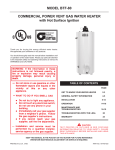
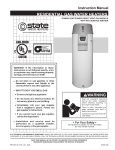

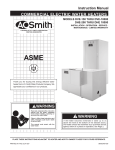
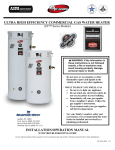

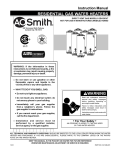
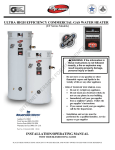
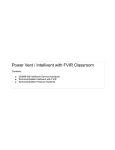
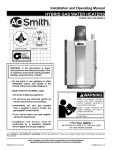
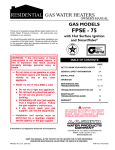
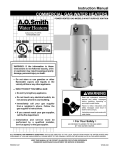
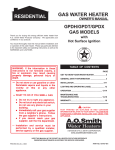
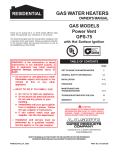
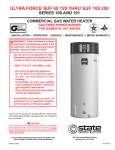
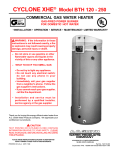
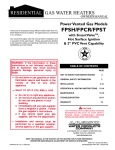
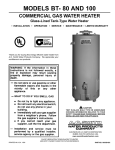
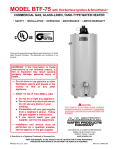
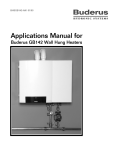
![Kenwood Z910DVD[K] Car Video System User Manual](http://vs1.manualzilla.com/store/data/007276303_1-7fde4030df8b82361c1715d4ef433389-150x150.png)